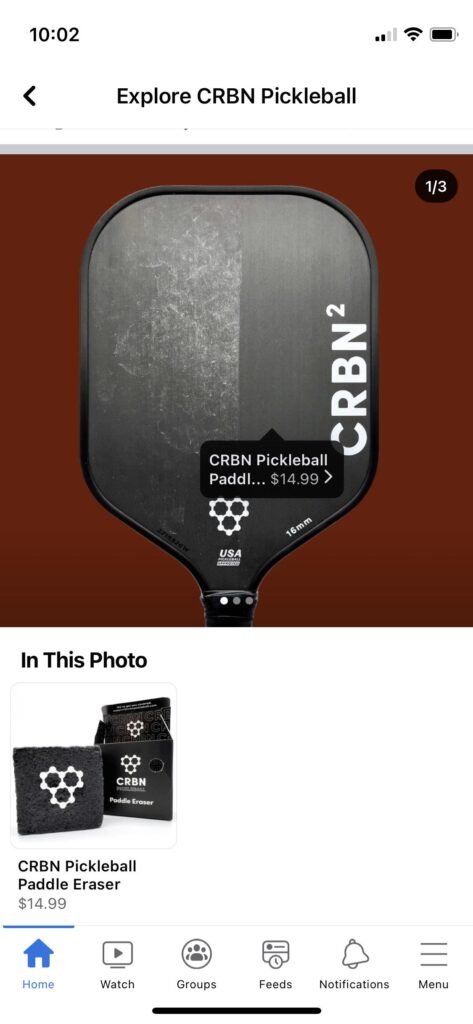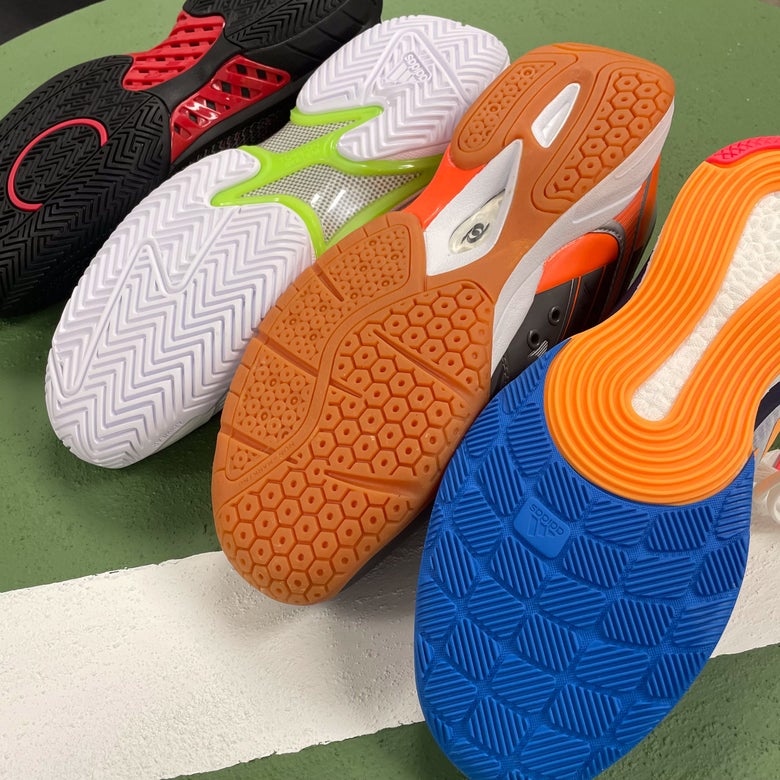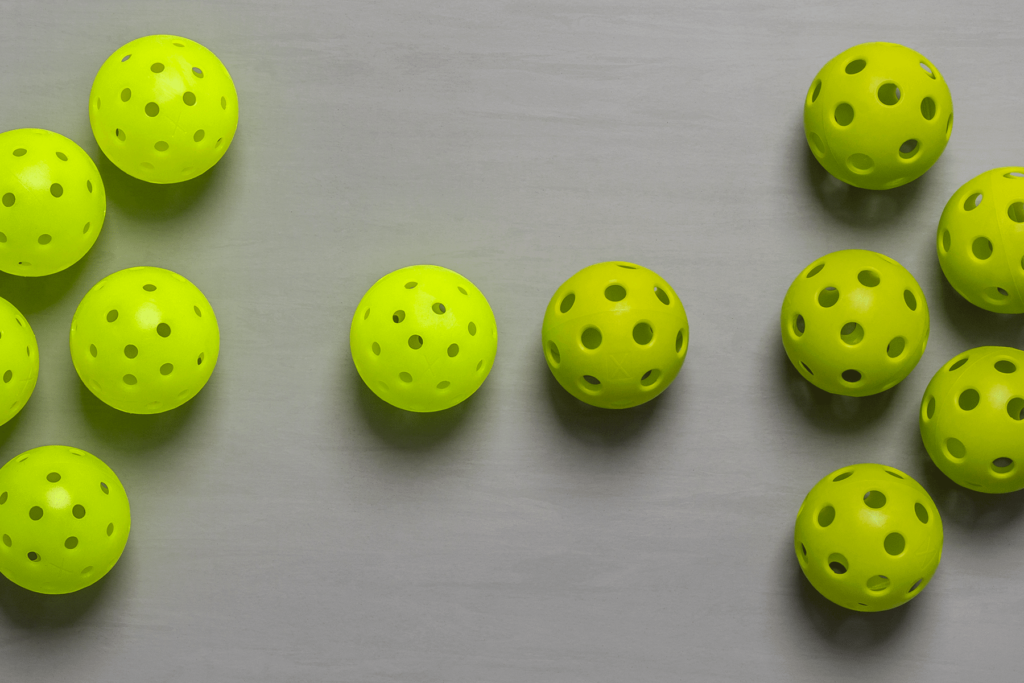To demo pickleball paddles, find a local sports store or club that offers paddle rentals.
Looking to try out different pickleball paddles before making a purchase? One effective way is to find a local sports store or club that offers paddle rentals. By taking advantage of this service, you can test out various paddles to determine which one best suits your playing style and preferences. Discover the benefits of demoing pickleball paddles at a nearby sports store or club!
What To Consider Before Demoing A Pickleball Paddle
Are you new to pickleball, or perhaps looking to upgrade your current paddle? Before making a purchase, it’s important to demo different pickleball paddles to find the perfect fit for your playing style. Consider these key factors to ensure you make an informed decision:
Grip Size
Choosing the right grip size for your pickleball paddle is crucial for comfort and control during play. The grip size refers to the circumference of the handle, and finding the correct fit can greatly impact your performance on the court. Here are the most common grip sizes:
| Grip Size | Player Type |
|---|---|
| 4″ | Small to medium-sized hands |
| 4.25″ | Medium to large-sized hands |
| 4.5″ | Extra-large hands |
It’s important to hold different paddle grip sizes during your demo sessions to determine which one feels the most comfortable and allows for excellent control of your shots.
Weight
The weight of your pickleball paddle can significantly impact your swing speed, maneuverability, and shot power. It’s essential to experiment with various weights during your paddle demo process. Consider the following weight ranges:
- Lightweight: Less than 7.5 ounces
- Mediumweight: 7.5 to 8.4 ounces
- Heavyweight: 8.5 ounces and above
While there is no one-size-fits-all answer to the perfect weight, it’s important to find a balance that complements your playing style. Lighter paddles provide increased maneuverability and allow for quicker reactions, whereas heavier paddles offer stability and power.
Material
The material of your pickleball paddle affects its durability, control, and feel. Most paddles are made of either graphite, composite, or wood. Each material has its own advantages:
- Graphite: Lightweight, offers excellent control and responsiveness
- Composite: A mix of materials, balances power and control
- Wood: Traditional feel, provides a softer touch
Consider the pros and cons of each material and test paddles made from different materials to see which one suits your game style the best.
Remember, demoing pickleball paddles allows you to find the perfect fit that complements your playing style and preferences. By considering grip size, weight, and material, you can make an informed decision and take your pickleball game to the next level!

Credit: www.ebay.com
How To Demo Pickleball Paddles
Trying before buying is crucial when it comes to choosing the right pickleball paddle. Demoing pickleball paddles allows you to test different models and find the one that suits your playing style. Here are three simple steps to follow when demoing pickleball paddles.
Find A Store Or Event
Start by locating a pickleball-specific store or event in your area where you can demo paddles. Look for sporting goods stores, pro shops, or clubs that offer paddle demos. It’s important to find a location that has a wide range of paddle options to try.
Ask For Assistance
Once you’ve found a suitable store or event, don’t hesitate to ask for assistance. The staff or knowledgeable players present can guide you towards the best paddles for your playing level and style. They can provide valuable insights and recommend specific models based on your needs.
Try Out Different Paddles
Take your time to try out various pickleball paddles and get a feel for each one. Start with paddles designed for your skill level and playing style. Hold the paddle, assess its weight, grip, and balance. Test it by hitting the ball against a wall or net to evaluate its performance. Keep in mind how it affects your control, power, and maneuverability on the court.
Repeat the process with different paddle models, noting the differences in materials, shapes, and surface textures. Pay attention to your comfort and how the paddle enhances your game. Consider trying paddles with varying core materials, carbon fiber faces, and different sizes to find the optimal combination for your pickleball experience.
By demoing pickleball paddles, you can make an informed decision when purchasing your own. It’s a valuable opportunity to assess the paddle’s performance and feel, ensuring it complements your playing style. Follow these steps, and you’ll be equipped with the paddle that enhances your pickleball game.
How To Evaluate The Paddle
When it comes to picking the right pickleball paddle, evaluation is essential. Understanding the factors that contribute to a paddle’s performance can help you make an informed decision. Here are three key aspects to consider when evaluating a pickleball paddle: comfort and feel, power and control, and maneuverability.
Comfort And Feel
Comfort and feel are crucial factors to consider when evaluating a pickleball paddle. A paddle that feels comfortable in your hand allows for better control and maneuverability on the court. Look for a grip size that suits your hand and a paddle weight that feels balanced and manageable during gameplay. Try holding the paddle in different positions to gauge its overall comfort and ensure it doesn’t cause any discomfort or strain during long matches.
Power And Control
Power and control are two essential elements that go hand in hand when evaluating a pickleball paddle. A paddle with sufficient power enables you to hit strong shots and smash the ball with ease, while control ensures accuracy and precise placement of your shots. To assess the power potential of a paddle, consider the material it is made of. Graphite paddles are known for their power, while composite paddles offer a balance of power and control. Evaluating the sweet spot of the paddle can also help determine its power and control capabilities.
Maneuverability
Another crucial aspect to consider when evaluating a pickleball paddle is its maneuverability. A paddle that is easy to maneuver allows for quick reaction times and agility on the court. Evaluate the shape and size of the paddle, as well as its weight distribution, to determine its maneuverability. Look for a paddle that offers a good balance between power and maneuverability to ensure you can make quick shots and react swiftly to your opponent’s moves.
By considering the comfort and feel, power and control, and maneuverability of a paddle, you can accurately evaluate its performance and make a well-informed decision. Take your time to properly demo and evaluate different pickleball paddles before settling on the one that best suits your playing style and preferences.

Credit: www.tennis-point.com
Considerations For Different Player Types
When considering different player types for demoing pickleball paddles, it’s important to understand the player’s skill level, playing style, and preferences. By taking into account these factors, players can find the paddle that best suits their needs.
When it comes to demoing pickleball paddles, it’s important to consider the specific needs and skill levels of different player types. Whether you’re a beginner, intermediate, or advanced player, the right paddle can greatly enhance your performance on the court. In this section, we will discuss the key considerations for each player type, helping you make an informed decision when choosing a paddle.
Beginner
As a beginner, comfort and control should be your top priorities. Look for a paddle with a larger sweet spot to help you make consistent shots while you work on improving your technique. A lightweight paddle can also be beneficial, as it allows for easier maneuverability and reduces the risk of fatigue during longer play sessions.
Some important considerations for beginner players include:
- Weight: Opt for a lightweight paddle to ensure easy handling.
- Sweet Spot: Look for a paddle with a larger sweet spot for more forgiving shots.
- Grip Size: Select a grip size that feels comfortable and secure in your hand.
Intermediate
As an intermediate player, you have likely developed a solid foundation of skills and are looking to take your game to the next level. Consider a paddle that offers a good balance between power and control. A medium-weight paddle with a balanced weight distribution can provide the versatility you need to excel in different game scenarios.
Key considerations for intermediate players include:
- Weight: Aim for a medium-weight paddle that offers a good balance of power and control.
- Material: Consider the material of the paddle to optimize performance based on your playing style and preferences.
- Edge Guard: Evaluate the durability and protection offered by the paddle’s edge guard.
Advanced
As an advanced player, you are likely seeking a paddle that can deliver maximum power and precision. Look for a paddle with a solid core and a higher weight to generate more power in your shots. Consider the paddle’s shape and design, as well as the grip, to ensure it complements your playing style and offers optimal control.
Important considerations for advanced players include:
- Core: Opt for a paddle with a solid core to maximize power in your shots.
- Weight: Consider a paddle with a higher weight for increased power and stability.
- Shape and Design: Evaluate the paddle’s shape and design to ensure it suits your playing style.
Credit: patchreefpark.org
Frequently Asked Questions
How Can You Tell If A Pickleball Paddle Is Bad?
A bad pickleball paddle can be identified by checking for signs of wear and tear, such as cracks or peeling. It should also feel sturdy and have a good grip. Additionally, a bad paddle may have poor control and produce less power when hitting the ball.
How Do You Test A Pickleball Paddle?
To test a pickleball paddle, follow these steps: 1. Assess the grip for comfort and control. 2. Listen for a solid sound when striking the ball. 3. Test the weight and balance to ensure proper maneuverability. 4. Check the durability of the paddle’s materials.
5. Try different shots to evaluate power and accuracy.
How Do You Evaluate Pickleball Paddles?
To evaluate pickleball paddles, consider their weight, materials, grip, balance, and durability. Weight affects maneuverability, while materials like carbon fiber or graphite can enhance power. A comfortable grip ensures better control, and a well-balanced paddle aids in shot accuracy. Lastly, durability ensures long-lasting performance.
Is There A Front And Back To A Pickleball Paddle?
Yes, a pickleball paddle has a front and back side.
Conclusion
To conclude, demoing pickleball paddles is an essential step in finding the perfect one for your game. By trying out various paddle types, weights, and grips, you can determine which paddle suits your playing style and provides the right balance of power, control, and maneuverability.
Remember to consider factors like your level of play, budget, and personal preferences when selecting a paddle. So, don’t hesitate to give paddle demos a try and elevate your pickleball experience.
Neil jacobson is an avid Pickleball enthusiast, writer, and coach dedicated to sharing the joy and intricacies of the sport. With 6 years of experience on the court and a passion for teaching, Courtney brings a unique perspective to his writing, offering practical insights and strategies for players of all levels. As a certified Pickleball coach, his mission is to inspire and empower individuals to excel in the game while fostering a sense of community within the Pickleball world. Through his articles, guides, and coaching sessions, Neil aims to elevate the playing experience and share the infectious enthusiasm that defines the Pickleball community.



